A science-based guide to seed cycling for hormone balance and to support fertility! Learn what seeds to use, how it supports your hormones and how to incorporate it into your daily routine.

Have you heard of seed cycling? This hormone supporting practice is one of the top trending wellness practices, and for good reason. More and more women are struggling with hormone imbalances.
Women’s hormones are a complex system that functions in a delicate balance. However, these hormones are greatly influenced by your diet, exercise, sleep, stress levels, and environmental toxins. This means that any of these factors can throw your hormones out of that delicate balance. In turn, a slight hormone imbalance can become the underlying issue for a number of health concerns, including irregular periods, acne, PCOS, thyroid disorders, and chronic fatigue.
Seed cycling is one of the easiest ways you can support your hormones in a gentle, yet effective way. This simple practice helps support balanced hormone levels, reduces PMS symptoms, boosts fertility and can help stimulate menstruation if it’s absent (amenorrhea). While seed cycling alone isn’t a cure-all, when incorporated consistently (especially with other hormone stabling practices) it’s a great way to take advantage of the healing powers in food. Read on to learn all about seed cycling and how to incorporate it into your daily routine.
WHAT IS SEED CYCLING?
Seed cycling is the practice of eating specific seeds during the two main phases of your menstrual cycle (follicular and luteal) to help promote the healthy balance of estrogen and progesterone levels. It’s a gentle and completely natural way to reduce PMS symptoms, boost fertility, and can help stimulate menstruation if it’s absent (amenorrhea), and other symptoms as a result of hormonal imbalances.
Seed cycling can be used at any stage of a woman’s life (including post-menopause). However, it’s especially beneficial when coming off of hormonal birth control or struggling with post-birth control syndrome symptoms like acne, irregular periods or missing periods, or PMS.
UNDERSTANDING YOUR MENSTRUAL CYCLE
To better understand seed cycling, you need to understand the two main phases of your menstrual cycle.
The first phase, the follicular phase, begins the first day of your menstrual bleed until ovulation. This typically lasts around 14 days. The second phase, the luteal phase, starts at ovulation until your next menstrual bleed. Luteal phase length can vary but this is also typically around 14 days.
When your hormone levels are balanced, estrogen rises during the first half of your cycle. During the second half of your cycle progesterone levels rise while estrogen levels slowly decline. An imbalance between estrogen and progesterone can contribute to PMS symptoms, menstrual cramps, acne, short luteal phases, anovulation, irregular cycles, and amenorrhea.
HOW TO START SEED CYCLING FOR HORMONE BALANCE?
Seed cycling is quite simple. You incorporate 1-2 tbsps of pumpkin and flax seeds daily during the follicular of your cycle. Once you ovulate, you incorporate sunflower and sesame seeds daily during your luteal phase.
DAYS 1-14 OF YOUR CYCLE (OR MENSTRUATION TO OVULATION)
-
- 1-2 tablespoons ground flax seeds
- 1-2 tablespoons ground pumpkin seeds
DAYS 15-28 OF YOUR CYCLE (OR OVULATION TO MENSTRUATION)
-
- 1-2 tablespoons ground sunflower seeds
- 1-2 tablespoons ground sesame seeds
If you don’t have a 28-day menstrual cycle, don’t worry! Many women don’t. It’s best to follow the 14 day cycle for each phase of seeds. By staying on track with the 2-week rotation, the process will nudge your body into an optimal menstrual cycle rhythm and help you get back on track.
WHAT IF YOU HAVE AN IRREGULAR OR MISSING PERIOD (AMENORRHEA)?
It’s possible to incorporate seed cycling even if you have irregular or missing periods. Instead of rotating with the phases of your cycling, you’ll follow the phases of the moon as a general guideline.
MOON PHASES SEED CYCLING GUIDELINES
-
- Days 1-14 (new moon to full moon), eat pumpkin seeds and flax seeds.
- Days 15-28 (full moon to new moon), eat sunflower seeds and sesame seeds.
It may seem odd or even a little woo-woo, but the moon is powerful. It controls the waves in the ocean, can affect our center of gravity, and have an effect on your menstrual cycle. Have you ever noticed that the moon and the average menstrual cycle are both 28 days? This is no coincidence. Many women’s cycles (when balanced) naturally follow the phases of the moon.
 How does seed cycling support hormone balance?
How does seed cycling support hormone balance?
In truth, there is little scientific research that supports the direct relationship between seed cycling and improved hormonal balance in women. There just haven’t been studies done on this practice. But that doesn’t mean it doesn’t work! It’s important to keep an open mind with nutrition and natural healing practices since there are limitations in research and lack of studies on specific topics.
While studies don’t directly link seed cycling to hormone balance, they show clear correlations that specific nutritional components in flax, pumpkin, sesame and sunflower seeds may play a role in supporting your natural hormonal cycle.
FOLLICULAR PHASE
During the first phase of the menstrual cycle (follicular phase), pumpkin seeds and flax seeds help improve our estrogen levels while preventing excess estrogen. Flax seeds contain lignans which bind to excess estrogen. Pumpkin seeds are high in zinc which helps support progesterone production as you move towards the progesterone rise in the second phase of your cycle.
LUTEAL PHASE
During the second phase of your cycle (luteal phase), sesame seeds and sunflower seeds help boost progesterone production. Sesame seeds are a rich source of zinc which help boost progesterone production and also contain lignans that help block excess estrogen while progesterone rises. Sunflower seeds are high in vitamin E and selenium. Vitamin E can help boost progesterone production, while selenium helps detox the liver of excess estrogen.
THE NUTRITIONAL COMPONENTS IN SEEDS
LIGNANS
Flax seeds are considered phytoestrogens, which have a weak estrogen-like effect in the body. (1) This naturally supports healthy estrogen production. Flax seeds are unique in that they also contain nutritional components called lignans which can help to bind excess estrogen. (2) Research shows that flax seeds help in lengthening the luteal phase, improving ovulation and reducing common PMS symptoms such as breast pain and cramping. (3)
Sesame seeds also contain lignans which help to block excess estrogen during the second phase of your menstrual cycle when progesterone rises. Research shows that sesame seeds are beneficial for postmenopausal women by improving blood lipids, antioxidants, and sex hormones. (4)
ZINC
Pumpkin and sesame seeds both contain high levels of zinc. This mineral helps to improve the formation of the corpus luteum, a transient endocrine structure that develops in the ovary. The corpus luteum is responsible for producing progesterone and stimulates the uterus to thicken in preparation for potential implantation. (5) (6)
OMEGA-3S, OMEGA-6S + VITAMIN E
Both flax and pumpkin seeds are rich in omega-3 fatty acids. Omega-3s promote blood flow to the uterus, increase progesterone secretion, and help maintain healthy cell membranes. (7) In addition, Vitamin E has been linked to reducing PMS symptoms. (8) Research also shows that Vitamin E, omega-3s and omega-6s found in pumpkin, sesame, sunflower, and flax seeds are essential for hormone production and follicle function.
SELENIUM
Sunflower seeds, high in the trace mineral selenium, supports estrogen detoxification in the liver. (9) (2) This helps reduce excess estrogen during the luteal phase when estrogen declines and progesterone rises.
How To Incorporate seed cycling Into Your Everyday Routine:
It’s recommended to eat 1-2 tablespoons of the specific seeds each day. Raw, ground seeds are best, especially for the flax and sesame. You can simply use a coffee/spice grinder to grind the seeds. I grind about a cup at a time and keep it in a glass jar in the fridge or freezer.
Think of your seeds like hormone balancing sprinkles. You can add them to anything! If you’re looking for ways to incorporate your seeds, here’s some ideas to get you started.
Some creative ways to use your seed cycling seed mix include:
-
- Add to smoothies, yogurt, oatmeal or chia seed pudding
- Sprinkle on toast, nourish bowls, salads or soups
- Pesto with pumpkin and flax seeds
- Homemade seed butter
- Make homemade granola with pumpkin and flax or sesame and sesame seeds
- This recipe for seed cycling bites for each phase of your cycle
But why not make your life easier? This is why I love Beeya Seed Cycling Blends.
Beeya Seed Cycling Blend
Beeya is a done for you seed cycling blend that provides the nutrients to bring back balance to your natural hormonal rhythm. Beeya’s Phase One blend consists of freshly ground pumpkin seeds and flax seeds with the addition of hemp seed and chamomile to support your estrogens levels during the first half of your cycle. Beeya’s Phase Two blend consists of freshly ground sunflower and sesame, hemp seeds, and chamomile to support progesterone in the second half of your cycle.You can feel confident that you’re getting quality with Beeya. Their blends are 100% organic, non-GMO, gluten-free and third party tested.
I love the convenience of having the fresh ground seeds on hand in my fridge. Consistency is key for seeing results and Beeya makes it easy for me to stay consistent. Plus, they ensure the highest quality and have the added functional ingredients like hemp and chamomile which I was regularly consuming in my diet. When there’s quality and convenience, it’s a no brainer for me.
How Long Does It Take To See Results?
Seed cycling takes time to work with your body. It can take at least three months of daily use to start noticing the benefits. Keeping a journal to track your symptoms throughout the month can help you identify the shifts happening over the months.
You might be wondering, do I have to stick with this for life? The truth is, it’s entirely up to you. Seed cycling is such an easy and gentle way to naturally support your hormone balance daily, you may want to consider it. It may feel daunting to think about doing this forever, but once you get into a habit, it may become second nature. I recommend taking it month-by-month. Making a monthly goal to seed cycle makes it feel much more manageable.
THINGS TO KNOW BEFORE YOU START
GRIND YOUR SEEDS
Use a coffee or spice grinder to grind or chop the seeds (especially the flax and sesame). This helps your body digest them. That being said, if you aren’t able to grind them, that’s okay. Incorporating the seeds is better than not because they aren’t ground. The only exception is flax seeds, which your body can’t break down or absorb if left whole.
If you don’t want the extra step of grinding your seeds, I recommend Beeya Seed Cycling Blends, a freshly ground blend of seeds for each phase of your cycle. Having their done-for-you blends takes the extra steps of preparing and grinding your seeds off your plate.
USE RAW SEEDS
It’s best to use raw (unroasted, unsalted) seeds to ensure they have all of their nutrients intact and nothing was lost in the roasting process. Using organic seeds when available helps reduce pesticide exposure which can disrupt hormones.
STORE IN THE REFRIGERATOR OR FREEZER
The polyunsaturated fats in seeds oxidize and go rancid very quickly, especially in sunlight and warmer temperatures. Keeping the seeds in a cool, dark place like the fridge or freezer to keep them fresh.
TRACK YOUR CYCLE
This is so important! While you can follow the moon phases, it’s best to rotate seeds with your unique cycle. In order to do this, you need to track your cycle.
I recommend the basal body temperature method for tracking your cycle. You can use an oral thermometer before you get out of bed in the morning. But I prefer to use the Ava Bracelet. It tracks your basal body temperature and other parameters that can help predict ovulation. I truly believe this is the reason we got pregnant so quickly! It’s 100% worth the investment.
PRIORITIZE HORMONE BALANCE
Keep in mind that seed cycling isn’t a cure-all. Hormone imbalances are often a result of digestive issues, blood sugar imbalances, stress, a lack of dietary fat and protein, lack of sleep, and environmental toxins (like your cleaning and skincare products). You can’t expect seed cycling to give you the boost you need without prioritizing good sleep, managing your stress, eating well and staying hydrated and limiting your exposure to hormone-disrupting toxins.
Need More Guidance?
Hormone balance is complex since there are so many factors that play into this delicate balance. It’s important to work with a doctor to test your hormone levels and properly diagnose your condition. Once you have this information a dietitian can help make diet and lifestyle changes to help you balance and maintain optimal hormone levels.

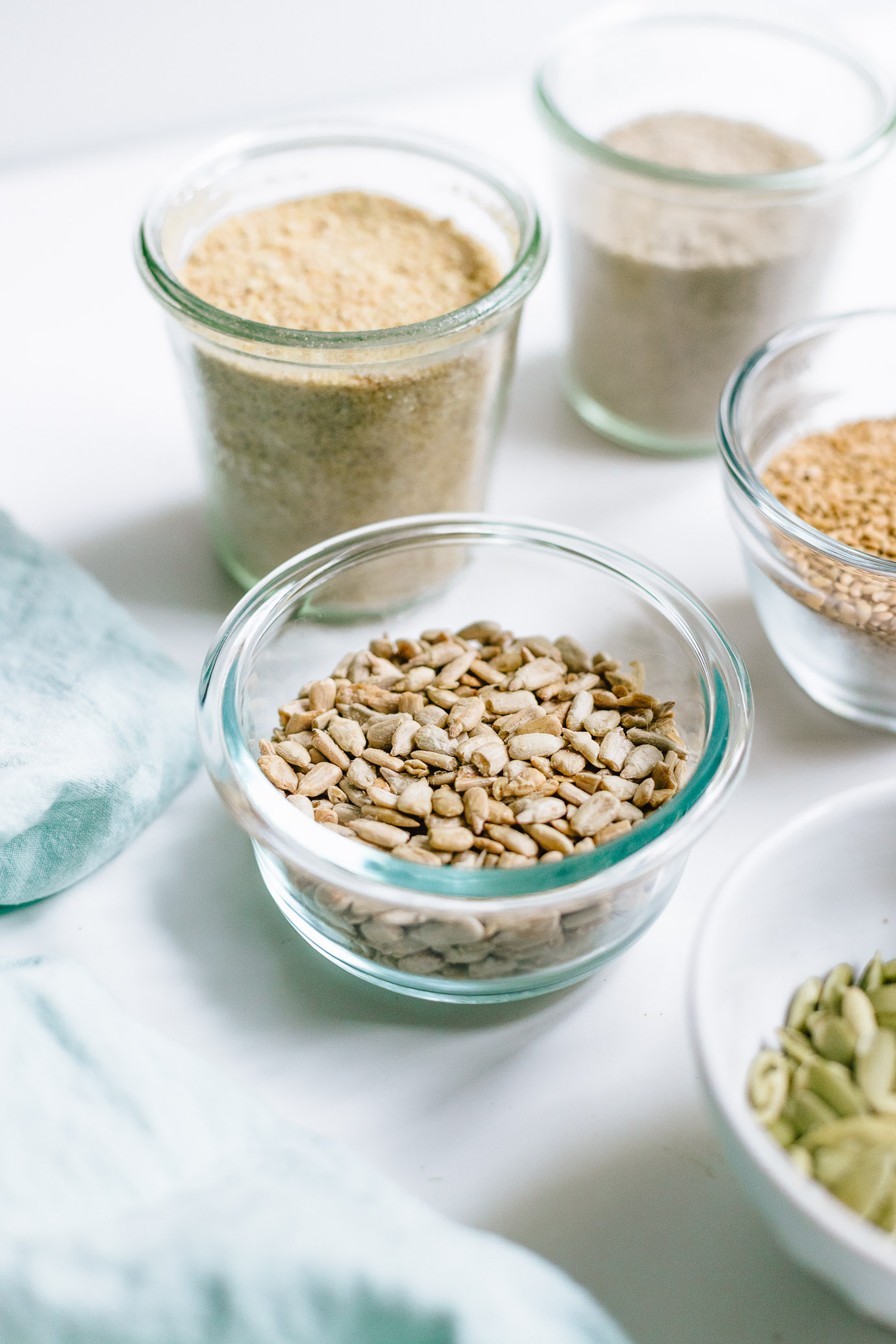
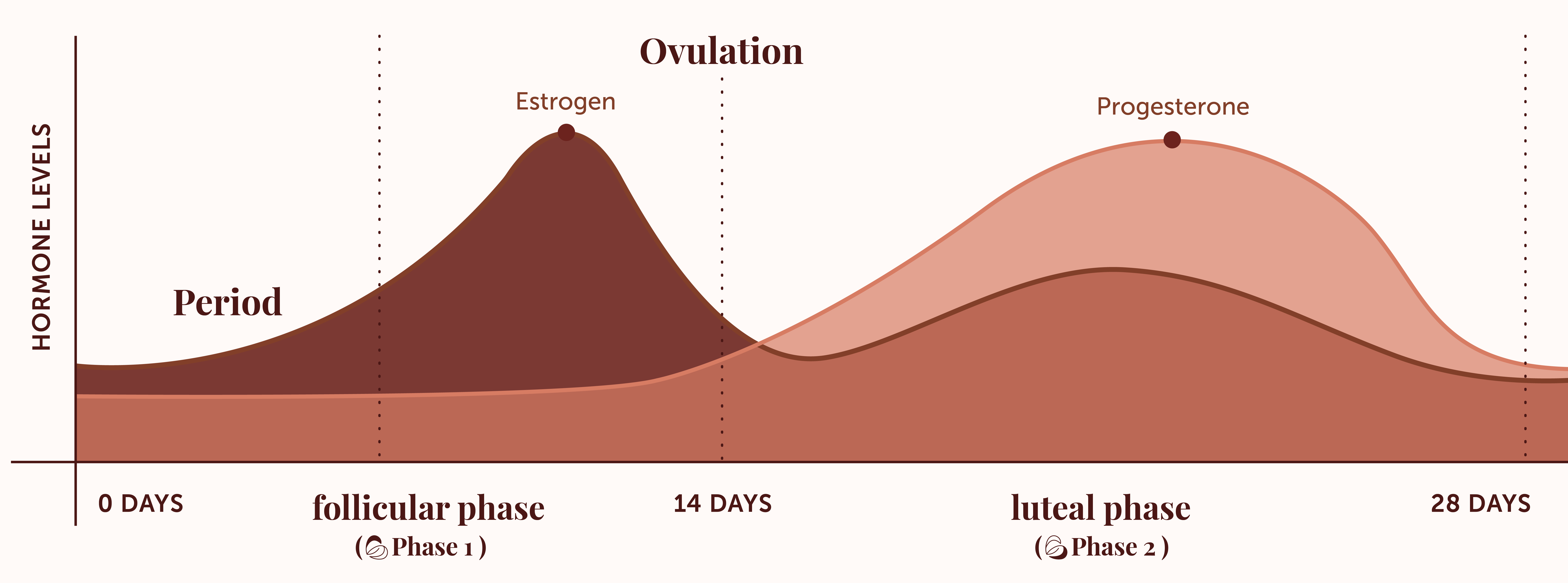
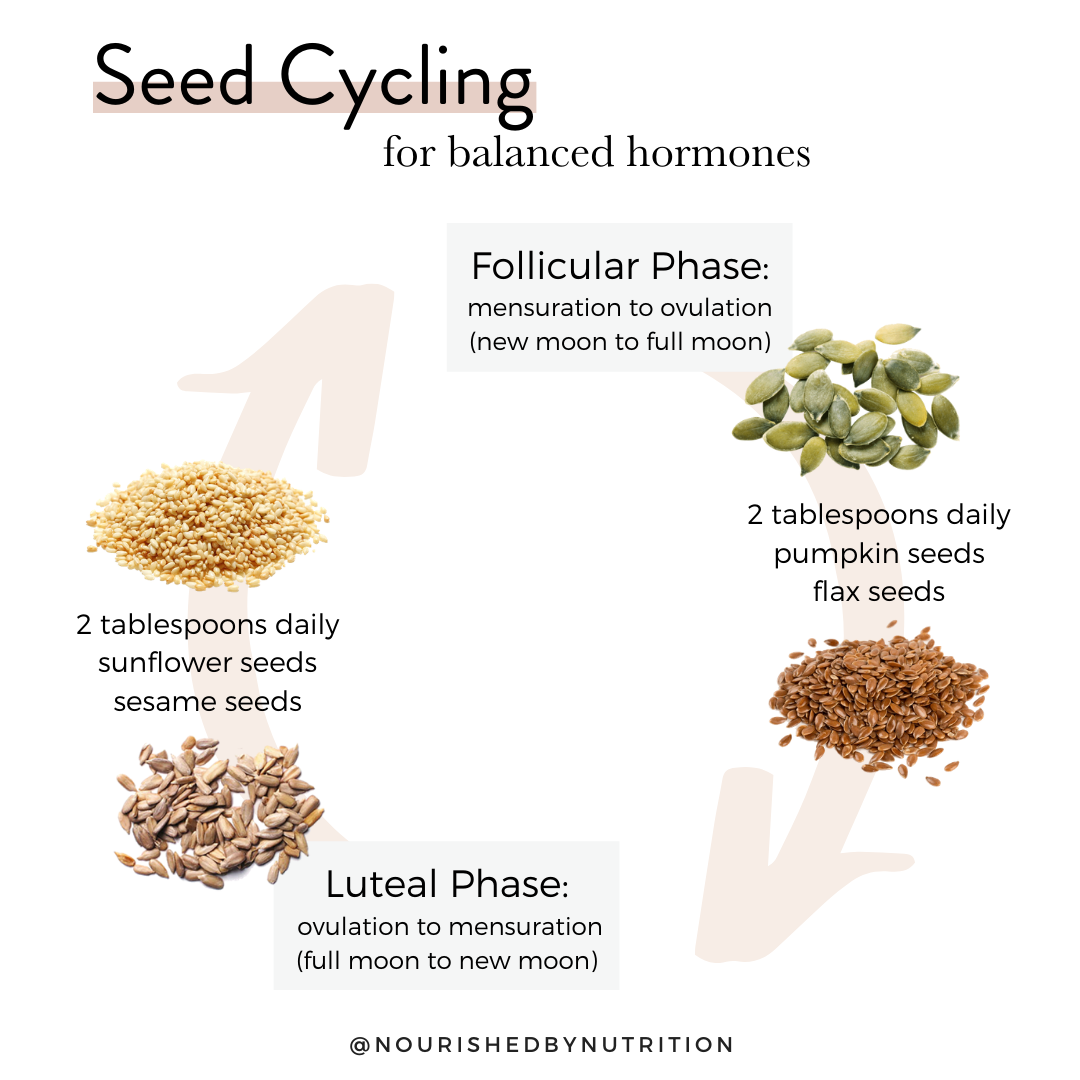 How does seed cycling support hormone balance?
How does seed cycling support hormone balance?
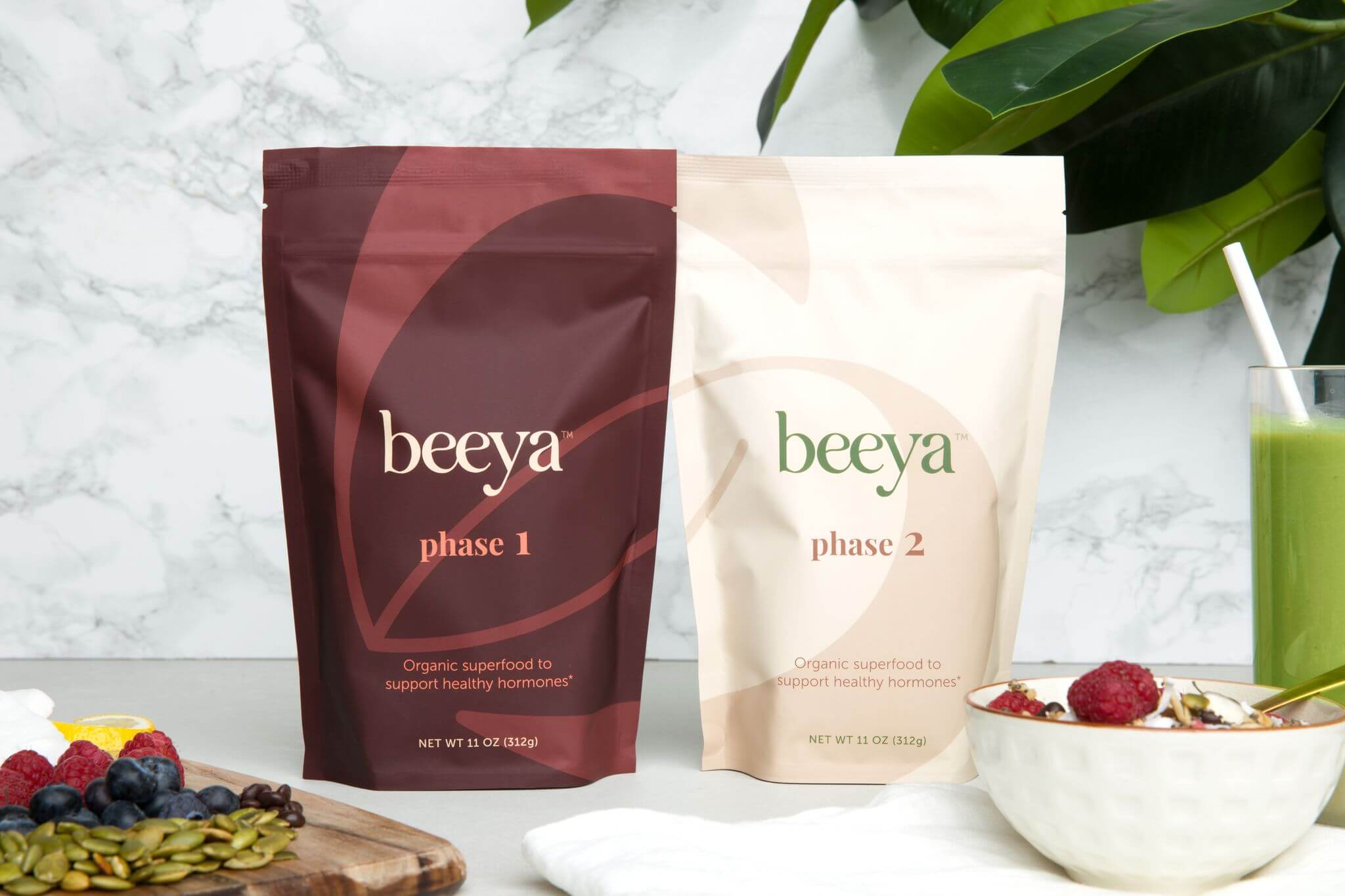
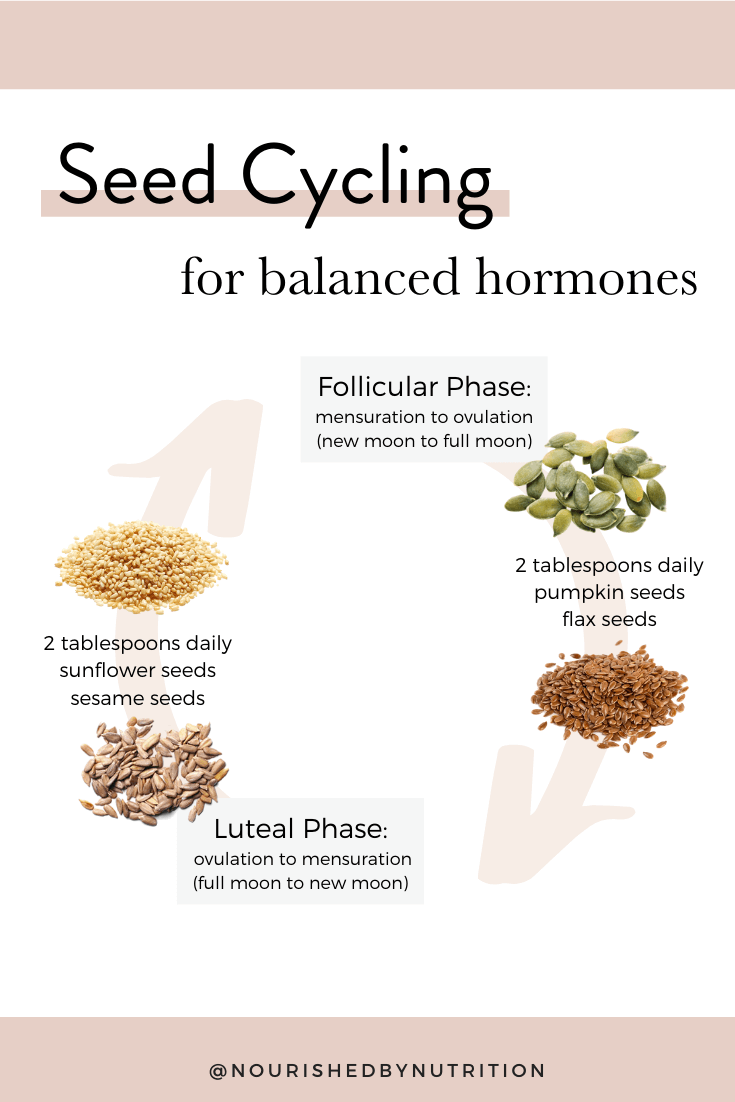

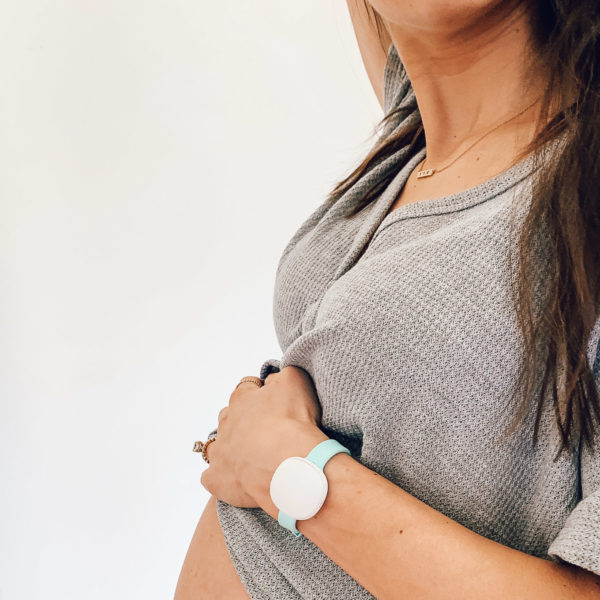

[…] with your body. It can take at least three months of daily use to start noticing the benefits. (Nourishedbynutrition) I recommend keeping a symptom journal to track your […]
If someone had a partial hysterectomy and hormones drop to barely nothing in menopause does seed cycling help menopausal symptoms?
i believe it would be dependent on if they still have their ovaries. i had a total hysterectomy but because i still have my ovaries, my body still produces hormones, i just had to relearn my cycle after my body went through a brief medically induced menopause.
i do believe that these seeds, along with chia and hemp can help alleviate some menopausal symptoms, it would just be dependent on what the body is asking for
[…] and steaming at lower temperatures preserve nutrients better than high-heat methods like grilling [9]. Research shows properly cooked seafood retains over 85% of vitamins and 100% of minerals [10]. […]
[…] maintain hormonal balance, seed cycling entails consuming particular seeds at various stages of the menstrual […]
[…] Regarding seed cycling: Nourished by Nutrition, “Seed Cycling for Hormone Balance” […]
[…] Flax seeds are rich in lignans, which may help metabolise estrogen, while pumpkin seeds provide zinc, a mineral essential for reproductive health24. […]
[…] It is thought that the nutrients in these specific seeds (such as lignans and zinc) support hormone production at each phase of the cycle and may help regulate the menstrual cycle. There’s not a ton of research on this approach to prove its efficacy, but there’s also no harm in adding some nutritious seeds to your diet, so I’ve been trying to implement it whenever I can. However, I would like to do more research on this and hope to review some studies in future posts. In the meantime, you can read more about it in here. […]
[…] Add seeds – Sprinkle in seeds like chia, flax, or pumpkin seeds for added fiber and nutrition. They can also support hormonal balance, making this smoothie a great option for those practicing seed cycling. […]
[…] diet since pumpkin seeds are part of seed cycling for balancing your hormones. Read more about that HERE. I love letting our food be our medicine, don’t […]
Look up other foods that contain lignons and sub them in for sesame and flax
For pumpkin and sunflower substitutes, look up foods high in Vit E, selenium and zinc
Ayurvedic remedies have really helped ease menopause symptoms for me. Natural and effective!
I am interested in Ayurveda for these issues also! Can you help with more information? I appreciate the feedback I can get!
[…] Learn more about seed cycling here […]
Does it matter whether the flax seeds are brown or golden? Or if the sesame seeds are hulled or not?
my doctor told me to look into seed cycling for balancing my hormones. However, I am allergic to sesame seeds and sunflower seeds. Is there a good substitute for those two seeds?
[…] We monitored my hormone levels every 3-6 months. Some things that we did to work on balancing my hormones were seed cycling and looking at my cycle being in alignment with the moon cycle. I will link some resources for seed cycling HERE. […]
Hi, I would like to know a bit more information about seed cycling please.
I am in menopause so can you explain to me how the seed cycling works as I don’t get a period anymore so how would I know how my cycle works and what phase I would be in please.
Hi Mel, I am in the menopause too. I have been seed cycling for about 4 years now. I use the moon phases to seed cycle. New moon to Full moon (days 1-14) follicular seeds and full moon to new moon (days 15-28) luteal seeds. My menopause symptoms have been very minimal since seed cycling and it does take a similar amount of time (like most natural remedies) 3-6 months. I can honestly say that I am very happy how the approach has worked for me. All the best Nickie
Hi, I was just wondering if you wouldn’t mind providing the name of the author for this article as well as the sources that were used for data gathering! This is a well written article, but I’m hesitant to share it as is.
I am a T2 Diabetic and menopausal, what would bee the best Seed Energy Bite for this time in my life? Thank you!
[…] Can refer to Do sesame seeds affect hormones? […]
[…] Can refer to What hormone does sesame seeds increase? […]
[…] you know changing what you eat can balance your hormones and help with period problems?1 Seed cycling is about eating certain seeds at different times in your cycle. It’s a gentle […]
[…] to grind the seeds to enhance nutrient absorption. Mix them into your favourite dishes or create a seed butter to spread on toast. The richness of sesame and sunflower seeds can be quite satisfying, especially […]
Hallo
I am new to seed cycling,so I have some basic questions. Somewhere else I have found that they recommended flax seeds from 0-5days, then pumpkin seeds til day 14, and so on. They divided the seeds to even shorter period of time and use only one type of seeds for some days before switching to another seed. Which method should I use? The one that you have described or the one that I have found? Thanks in advance.
[…] Hormone balancing: Today, most women are struggling with hormonal imbalance across the world. The reason is increased stress, lack of physical exercise, unhealthy eating habits and lifestyle. While its important to make healthy lifestyle choices to restore hormonal balance, nutrition plays a vital role. Foods rich in Omega-3, Omega-6, magnesium and zinc help in balancing hormones. Including chia seeds, pumpkin seeds, sunflower seeds and flax seeds help to balance estrogen level in body and contribute to the overall well-being of female health. Seed cycling is a huge trend around the world for hormone balancing. […]
[…] of ground pumpkin seed and ground flaxseed for added nourishment. Learn more about seed cycling here from a […]
[…] in the trendy practice of seed cycling for restoring hormonal balance. Feel free to check it out on Nourished By Nutrition. Some say it worked for […]
[…] in the trendy practice of seed cycling for restoring hormonal balance. Feel free to check it out on Nourished By Nutrition. Some say it worked for […]
I’m so interested in starting seed cycling but I have a sesame allergy. Do you think if I cycled without the sesame, the other three seeds would have the same effect? Is there a replacement seed I could use?
[…] Sunflower Seeds: Rich in vitamin E, sunflower seeds are excellent for promoting hormonal balance and supporting progesterone production. […]
2yrs ago I started seeing changes in my period, sometimes my period is shorter or longer, doing seed cycling helped, until this month was supposed to get my period on the 14th & but I didn’t, I continue on sesame & sunflower seeds, for 3 more days, didn’t know if I had to switch seeds, so after 3days nothing still, so I stopped completely, so I ended up getting my period 2 days later, so it was delayed 5days total, this never happened, my question is, next time do I switch seeds weather I get my period or not? Please help 🙏
Don’t worry about switching up the way you take the seeds. Stick to what you were doing. Your body will adjust with the seeding and align as needed. Sometimes our cycles shift. Staying consistent with the seeds will keep your body on track… even when it seems to be trying to change course.
[…] https://nourishedbynutrition.com/seed-cycling-for-hormone-balance/ […]
Thank you so much for this very informative post
[…] Seed Cycling for Hormone Balance – Nourished By Nutrition […]
[…] to toxins in the GI tract so they can be easily eliminated. If you are really motivated, check out seed cycling, which supports detoxification and your menstrual […]
Thank you so much for all of this information! I am currently on the journey of restoring my menstrual cycle and learning about the different phases, so this is very helpful! I do have one question: when consuming certain seeds in a certain phase (for example during the phase of incorporating sunflower and sesame seeds), do I need to AVOID the seeds from the other phase? Should I never, for example, eat sesame and flax seeds together (or same day, etc) since they are to be consumed in different phases? Thank you for taking the time to read this!
I have the same question as Ellie, has this been answered? thank you!!
It was recommended that I start seed cycling. I am post-menopausal and am wondering, since I have no measurable hormones left of my own, how seed cycling will help me. Will it give me a little progesterone and estrogen? Thanks!
[…] immune system because they contain antioxidants such as beta carotene and selenium. If you are into seed cycling for hormone health, try alternating pumpkin seeds and sunflower seed kernels as […]
[…] They also contain phytoestrogens, which are plant compounds that can mimic the effects of estrogen.Opens in a new windownourishedbynutrition.comNuts and seeds for hormone […]
Will putting the seeds in hot oatmeal lead to the oxidation from warm temperatures mentioned above?
[…] 1 Tblsp seeds (for seed cycling info. HERE) […]
[…] Into this next pregnancy I may try seed cycling. I just recently learned about it and since I am I HUGE advocate of letting food be thy medicine, […]
Can you use the seed cycle in the menopause and post menopausal stages
How can you use the seed cycle in menopause and post menopause thanks
Hi :) thanks for this article, I only just learned about seed cycling today.
My question is, what if you are done with phase 2 but your period is not showing… are you waiting until the first day of your period then? Many thanks, Inka
Hey! Thanks for the info. I normally have flax in my daily shake. Do you know if consuming flaxseed during the luteal phase would be detrimental to my hormones? And vice versa with the other seeds?
If my cycles are generally 30-31 days long and I want to sync up with the moon, can I just start the follicular phase (pumpkin/flax) on the new moon? My new cycle tends to always start on the 29th-ish. So its like a week after the current new moon.
[…] health benefits such as reducing inflammation or supporting healthy hormone levels. As with any holistic approach to health, it’s important to remember that everyone’s body responds differently so what works […]
[…] contain lignans, phytoestrogens that help balance female hormones. You might even try an Ayurvedic remedy called seed cycling to see if it helps your menstrual […]
Hi,
Just want to came and tell my fresh experience..
It took first almost three years, we were trying to conceive. Then I decided very strongly, I need to balance my body, my hormones, because of long going stress and worries. I was kind of sick, or my hormones were, with all the feelings I had. I also started seed cycling, and it took three months, and I am now pregnant. (And just to let you now, natural and with VERY low AMH levels.
In the first month I noticed my skin getting better, maybe also my nerves. But it also demand you sleep enough! There really must be something with the seed cycling. I did not even grind the seeds, neither I had raw or organic, but I trust they are good stuff in here were I live (Nordic countries).
Hope everything goes well now, I will continue eating seeds now as pregnant also, just need to listen to my self bit better how to eat them, cos the hormonal changes are not so clear now.
I think seed cycling fits for every women. You can eat seeds anytime you want, thats the easy part, because the benefits are in already then.
But if you want cycling and balancing, you need to have the common sense and listen to your body, its not so hard.. It just eating in two weeks cycles, google moon phases and just start it :)
You mentioned it can be helpful post-menopausal. How do you determine the cycles once you don’t have menstral cycles?
Go by the moon
the mooooon!
If in Menopause, what stage of cycle would your treat hormone imbalance ? What cycle of seeds would you use at what dosing and schedule? Thank you in advance for your information. I’d love to buy the seeds ground, if reasonably priced.
Thank you for this article! Is it recommended to keep seed cycling in 2 week rotations after you get pregnant?
My period is dark with clothing. And it 2days but don’t follow well
And am trying to conceive for the second time. My circle is usually 23 -26 days. Can i do the seedling
This was a great article! Thank you. Also I’m going to recommend this product to my clients.
Hello,
I am having periods every 2-3 weeks and I used to be every 28-30 days. Should I just go with the moon phases to keepthongs simple or would you recommend changing the seeds every cycle. Being that they happen so frequently now I’m not sure which would be more beneficial. Thanks so much for your article. I’ve already have my seeds ready to go just unsure where to start!
Kaye
HI ,
It was recommended by my functional dr to have a look at seed cycling. You mentioned that it works also on post menauposal people.
I do not have my period anymore, how do I use the seed cycling if I do not have the menstruation phases?
If you don’t get your cycle anymore you can follow the moon cycles instead. You can start at the new moon phase and start that as your Day 1. The last new moon was 3 days ago on 11/23 so yo can jump in really quickly or wait until next month to start.
If we start eating seed cycle and there is no period next month then how to eat seed cycle?
After 14 days of each just start again with the pumpkin and flax. Eventually your cycle should start on the day you switch to pumpkin and flax.
[…] usually takes three weeks for seeds to germinate, and you may need to start a new seed cycle again. It is recommended that the windows in your house face south (preferably). It is critical not […]
I had an extremely regular period but have been having a hard time trying to get pregnant… So I thought why not try the seed cycling… After about four months of following the above protocol consistently, I didn’t get my period and I wasn’t pregnant… So I decided I had better stop ingesting the seeds. I’m not really sure what has happened or if I should even try the cycling again… But I think maybe it’s time to go to a doctor.
Seed cycling isn’t a cure for hormone imbalances. It can be helpful for some in nudging your body in the right direction or help by ensuring your getting a dose of the important nutrients for hormone health. The seeds aren’t going to be harmful to your health. I always recommend figuring out the root cause of your hormone imbalance or missing period by working with a practitioner.
[…] Seed Cycling for Hormone Balance […]
Seed cycling has personally helped me a lot! As a PCOS warrior, including these seeds have helped me regularise my cycles and helped in healing my acne as well!Thanks for the detailed write up
I really appreciate you having this here. In helping a client and needing a quick and ACCURATE guide, it’s nice to know that there’s someone out there putting out good information. Thank you very much!
Hello, I want to thank you for this and I want to ask for me my last two cycles are 42 and 53 days, do I still just do the seed cycling for 14 -14 days starting from the day of my period. What do I eat or do after the 28 days and don’t get my period. Thank you
This is explained in the article. It’s best to stick to a 14 day/14 day seed cycling protocol to help nudge your body back to regularity.
Any advice on seed cycling for fibroids? I have read mixed advice some say to skip the pumpkin and sunflower?
To my knowledge, pumpkin and sunflower seeds are still okay to consume and don’t need to be avoided.
[…] Seed Cycling for Hormone Balance […]
[…] tbs of one of these seeds —flax, pumpkin, sunflower, sesame (this article will explain which seed to eat in your cycle […]
[…] yummy snack (also wonderful for seed cycling for natural hormone […]
I read through the article and it’s very enlightening. In the part of Nigeria where I stay, these seeds are hard to get. Any alternative?
Which part of Nigeria do you stay, you can order from Lagos or places close to you, I ordered mine.
Eat Egusi you use pumpkin seeds in this meal.
[…] won’t work for you, just store your ground seeds in the refrigerator between uses. Check out this post by Nourished by Nutrition for additional information on seed […]
[…] In the event you’re a girl and you utilize seed biking to assist regulate your hormones, you’ll be able to add your uncooked seeds to this smoothie […]
[…] If you’re a woman and you use seed cycling to help regulate your hormones, you can add your raw seeds to this smoothie as a consistent way of […]
[…] are believed to support progesterone production and to help during the estrogen-dominant follicular phase of ovulation, which ensures proper egg […]
My doctor recommended that I begin seed cycling. I found out that I’m actually allergic to sunflower seeds, I decided to not take another risk and omitted the seeds altogether. Are there any alternatives that can help increase estrogen and progesterone levels as sunflower seeds do?
Although it wouldn’t be as “natural,” you could try a vitamin E supplement
Hi I have one doubt, i have bad acne after the pill, and i read that sunflower oil could break me out more, so I was wondering if there was another seed I could use instead.
I found out that I was allergic to sunflower seeds as well.
[…] Seed cycling uses food (flax, pumpkin, sesame, and sunflower seeds) to work with your body to support your hormones and menstrual cycle. As you move through your cycle, your curated seed blends will help your body receive micronutrients to counteract your PMS symptoms. […]
[…] Resources:1. Can Seed Cycling Balance Hormones and Ease Menopause Symptoms?2. Seed Cycling for Hormone Balance […]
[…] my skin look and feel amazing.) I started seed cycling (this helps balance hormones. Read about it here.) Overall, I just ate healthier and realized that I truly am what I eat, resulting in less acne and […]
[…] Dishing Up Balance, Hello Clue, Amino, Women’s Health, Reduce Injuries, Nourished By Nutrition, Omne Wellness, Dave […]
[…] in the trendy practice of seed cycling for restoring hormonal balance. Feel free to check it out on Nourished By Nutrition. Some say it worked for […]
[…] this recipe, there’s actually no baking involved! If you’re into seed cycling for hormone balance, you can adjust the ingredients for where you are on your moon cycle (hence the […]
Hi Jessica, I have PCOS, started seed cycling 6 months and managed to get my period without using pills. But I developed piles despite having a diet rich in fruits, vegetables and fluids. I suspect it was because of the sesame and flax seeds that are known to have a heating effect on body. How can I take them in summer to nullify it?
In fact numerous studies have shown flax(ground ) to be an aide in gerontology as well as all ages of diverticulum disorders. The increased health of macrobiotic environment and better functioning expulsion of materials from intestines is extensive. Better system= regulated temps. Likelihood is good that you need coconut, and yoga.
Hloo
I want to ask that I want to start seed cycling for my pcos as I am having irregular periods,I read that I should start from new moon day but as new moon has gone for this month may 2021 now today its 14 may so is it okay to start it today or wait for next new moon??
If you’re following seed cycling, should you not have sunflower seeds during the follicular phase? For example, I like to have sunbutter on paleo bagels for breakfast; should I skip it during the follicular phase? Thank you!
Can you tell me if seed cycling might help switch my cycle to follow more of the moon phase? Right now I know I am out of sync and have my cycle with the full moon. I do have a longer than 28 day cycle, closer to 30…
As i have don’t currently have a periods, so it says I need to go according to moon
As new moon is far, can i start from full moon with sunflower & sesame seeds?
Thanks for such nice information.
But i have questions.
01) can we intake other seeds and nuts with Seed cycling like Chia seeds, walnuts almond and others ?
02) can we put these seeds pumpkin, flax and sunflower sesame seeds with milk in night ?
Thanks
please reply i will be grateful.
You can take spices at night, seeds in the morning or better mid day with any kind of milk product, or without milk product it is fine evenings.
[…] x Seed cycling read more […]
[…] https://nourishedbynutrition.com/seed-cycling-for-hormone-balance […]
Hi Jessica, great content! I am allergic to sesame, is there a replacement?
Hi Safaa,
There isn’t a replacement for the sesame seeds. I recommend taking two tablespoons of sunflower seeds during your luteal phase. You’ll be getting the benefits of sunflower seeds that can help support that phase of your cycle.
xx, Jess
Hello Jessica, instead of grounding this seeds, can I just put it in water and leave it for 24 hours, then drink the water?
I haven’t seen my period for 3months now and I have been having this hormonal imbalance for 2years now, can seedling cycling help balance it?
You can drink high concentration of liquid vitamin C and turmeric with organic milk, green tea suppliment and warm water- Do flexibility enhancing stretches, and ginger along with the seed cycling. Get yltrasound for fibroid.
My daughter will be 11 in 4 months. She has not started her period yet. This month she noticed breast tenderness and lower abdominal cramps, no flo. I noticed pms “like” emotions prior. She and I have charted what she noticed in her calendar. Any advice how I can nutritionally support her bodys hormones as she’s entering the change? I don’t want to hurry her bodys natural rhythm but also want her strong nutritionally. Would seed cycling at this time with her be a good or to-soon thing? Those 4 seeds we already eat in our family regularly but not in the seed cycling order. We’d never heard of seed cycling before. Though, I’ve now learned the benefits and I will be doing this cycling for myself, and of cource wondered about my daughter.
Hi Candance,
Seed cycling is a great way to support the body and hormones. Keep in mind seed cycling isn’t an exact science. It’s a way to use nutrients and plant-compounds to support the body. Nuts and seeds are a great way to support the body daily at any age. Eating the seeds on rotation won’t be like a light switch that turns on or off hormones. It’s just using the nutrients found in certain seeds to give your bod the extra support it needs during specific times throughout the month. xx, Jess
I have a question. Can I take two tablespoons of pumpkin seeds instead of flaxseeds because it doesn’t suit me or, is there any substitute for flaxseeds. Please help me regarding this issue. Thank you.
Hi Asma! There isn’t a replacement for the flaxseeds. I recommend taking two tablespoons of pumpkin seeds during your follicular phase. You’ll be getting the benefits of pumpkin seeds that can help support that phase of your cycle.
Hi,
I wanted to know if I am already tracking my ovulation using LH strips and BBT, and I know that ovulation occurs later than day 14. Like for me it happens around day 25 of my cycle. Do I need to follow the Follicular phase seeds until I’m sure I have ovulated? And start Luteal phase seeds on day 26 of my cycle? Please help.
Also, is seed cycling safe during pregnancy?
It’s best to follow your unique cycle. If you know when you ovulate, than follow the follicular phase seeds until you’ve ovulated and then switch to the luteal phase seeds. It’s safe to consume seeds while pregnant. Incorporating seeds daily is a great way to get in important nutrients for you and your growing baby.
[…] Seed Cycling for Hormone Balance Seed Cycling and Pregnancy Before, During and After. […]
Do you have to take them together or can you have pumpkin seeds in the morning and flax in the evening!
[…] this recipe, there’s actually no baking involved! If you’re into seed cycling for hormone balance, you can adjust the ingredients for where you are on your moon cycle (hence the […]
Hi! I’ve just started seed cycling and I am curious if there are any problems or interactions if I am also taking a sunflower lecithin supplement daily. Will that interfere with anything during the 2 weeks of flax/pumpkin seeds ? Thanks!!
Hi Meghan, Great question! From my research, there shouldn’t be an interaction since sunflower lecithin is extracted from the sunflower and doesn’t contain the same properties as the whole seed.
Hi, I read about seed cycling and I’m very new to this, but I’m willing to try anything at this point. Here’s my question…I’m currently on a 3month birth control pill because of extremely heavy periods. How would I incorporate seed cycling into this when I can’t stop my birth control without knowing that seed cycling will work? What number of days would I follow for each set of seeds? Thank you.
Hi Kyleen, Incorporating seeds is a great way to nourish your body, regardless if you’re on birth control or not. I recommend the moon cycle method, which means switching seeds with the phases of the moon, every 15 days.
Hi, this is great information, thank you! I seem to continue to be lost on one big point though…when your cycle is irregular or longer than 28 days, can you offer guidance on how to adjust seed cycling? So for example would you continue to use phase 2 seeds (sesame and sunflower) until your period arrives even if it’s days or weeks late or stop seeds after day 28 and do nothing until period arrives?
Great question! Seed cycling is based around ovulation and each woman’s unique cycle. Phase 1 of seed cycling is one tablespoon of raw, ground pumpkin seeds and one tablespoon of raw, ground flax seeds from day one of your period until the day before you ovulate. Phase 2 of seed cycling involves eating one tablespoon of raw, ground sunflower seeds and one tablespoon of raw, ground sesame seeds per day from the day of ovulation until the day before the first day of your period. In order to know when to switch, it’s best to know when ovulation occurs. This is a good resource for ovulation information: https://helloclue.com/articles/cycle-a-z/ovulation-101-what-is-it-how-does-it-work
That being said, seed cycling isn’t an exact science. The key is consistency with whichever cycle you seem to follow. It’s okay if the seeds and your cycle don’t match up 100% perfectly. If you’d like to follow the moon cycle method, you could also do that seed cycling day 1-15 and 16-30 but your cycle wouldn’t match up exactly with the days you are switching seeds.
Do I have to grind the seeds or can i eat them whole? I feel lazy to grind it
Hi Adeeba, Grinding the seeds helps your body digest them. That being said, if you aren’t able to grind them that okay. Incorporating the seeds is better than not because they aren’t ground. The only exception is flax seeds, which your body can’t breakdown or absorb if left whole. You can buy ground flax seeds though.
Hi Jessica, I have a shorter cycle of 23days so how to do the seed cycle best.
[…] Seed cycling is one of the easiest ways you can support your hormones in a gentle, yet effective way, according to NourishedbyNutrition.com […]
Hi Jessica! Thanks for this really informative and great website! Your recipes look amazing! I was just curious if you think this seed cycling could help normalize my periods that are out of wack due to breastfeeding?
Great question! I haven’t seen much research on this. However, if you are breastfeeding I don’t think seed cycling will help restore your period since prolactin the hormones that produce breast milk is what prevents most women from ovulating. That being said, it can’t hurt to add the healthy fats to your diet.
Great information is there a substitute for sunflower seeds I am allergic to them.
Hi Lexi, THere isn’t a seed that will have the same unique properties as sunflower but since you’re allergic just leave it out! You can just do sesame during this phase. Otherwise, try adding in some hemp seeds or a nut like cashews for a variety of nutrients and additional healthy fats.
My periods not ragular …wihtout medicn periods not come…am suffering pcod …plz help me how can i use seeds plz
This post explains in detail how seed cycling can help. That being said, it’s not a replacement for professional help. I recommend talking with your doctor and working one on one with a professional who can test hormone levels and get to the root cause of your period problems. xx, Jess
Thank you!! I am about to get off hormonal birth control and am excited to have a practice to help regulate my hormones naturally! :)
Thank you for this guide! I am about to switch off hormonal birth control and excited to have a practice to help with the transition!
I’m so happy you found the guide helpful! It’s such an easy way to support your body’s natural cycle.